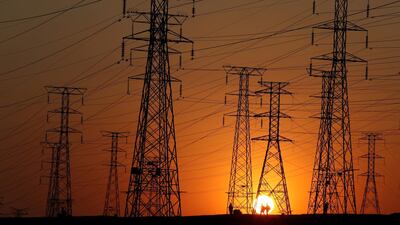South Africa’s government, business groups and labour unions said they have agreed on a pact to turn the country’s debt-stricken state-owned power utility around and increase electricity output to address rolling blackouts.
The accord calls for Eskom Holdings’s 488 billion rand ($30 billion) of debt to be reduced and for adequate resources to be “mobilised” to ensure it becomes financially sustainable – but is scant on detail on how this will be done.
“Finance mobilised will provide investors with appropriate long term, stable and reliable social and financial returns,” the National Economic Development and Labour Council said in the plan, which was agreed on Tuesday.
The plan makes no mention of a previous proposal for the Public Investment Corporation, which manages the pensions of state workers and has assets of 2.1 trillion rand, to take over part of Eskom’s debt.
Institutions that make funds available must do so within the mandates and risk-mitigation processes can’t be compromised, it says.
Eskom, which provides about 95 per cent of the nation’s power, isn’t selling enough to cover its costs – a legacy of years of mismanagement, inadequate maintenance and overruns at its two newest plants. The utility’s inability to supply sufficient electricity has curbed economic growth, with Goldman Sachs describing it as the greatest threat to the economy.
The company is at the forefront of a group of South African state-owned companies to have run into financial distress and are now in need of funding. The National Treasury said in July it would also “mobilise” more than 10 billion rand of funds for bankrupt carrier South African Airways, though the financing has yet to be delivered.
The plan, now that it has been agreed, will allow the work of raising funds to reduce the debt to begin, said Martin Kingston, deputy president of Business Unity South Africa, a business group that took part in the negotiations.
“Eskom still presents the biggest single threat to the economic system of South Africa,” he said. “Feeding this fire gets nowhere, you’ve got to douse the fire. The framework agreement commits the social partners to urgently collaborating to resolve this situation.”
The pact commits the government to removing all regulatory obstacles that hinder companies from generating their own electricity, while businesses agreed to implement projects to add 2,500 megawatts of supply within two years. The government also agreed to buy an additional 2,500 megawatts of emergency power, 500 megawatts more than previously announced.
Eskom was given the green light to renegotiate overly onerous contracts with coal suppliers and independent producers of green power that can supply the national grid as soon as possible.
That process will ensure “an outcome that is sustainable for suppliers, ensures a fair return, is affordable to Eskom and is within the confines of the law”, the pact states.
The plan to fix Eskom forms part of a broader strategy that was agreed to resuscitate Africa’s most-industrialised economy, which the National Treasury and central bank expect to contract more than 7 per cent this year. President Cyril Ramaphosa will provide details once it has been finalised by the cabinet, his office said in an emailed statement.
The pact also places an onus on Eskom to review all its material contracts to ensure that they aren’t corrupt and that it isn’t overpaying for goods and services. Power prices must be both cost-reflective and affordable for businesses and households.
Eskom must adopt a zero-tolerance approach toward corruption and law-enforcement agencies should be given the capacity to prosecute anyone found to have misappropriated its funds.
Finally, Eskom’s operating model will be reviewed with a view to addressing its bloated management structure and associated costs.

